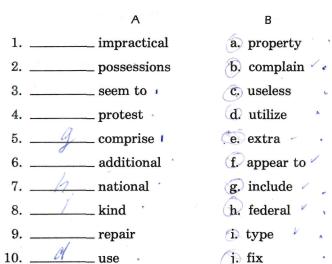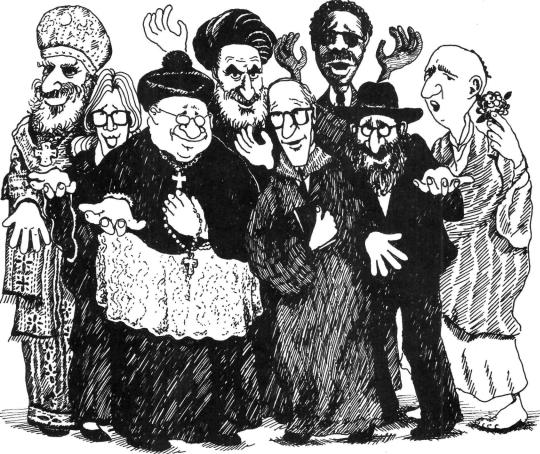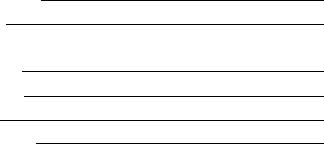
contactusa
.pdfC. Vocabulary
DIRECTIONS: Circle the letter of the wordfsj with the same meaning as the italicized wordfsj.
1. |
I can't have the kind of life I deserve. |
|
|
|
|
|
a. should have |
b. can have |
|
с |
had |
2. |
It angers him that he can't have an easy life. |
|
|
|
|
|
a. confuses |
b. upsets |
c. |
|
worries |
3. |
We should not complain about taxes. They are necessary. |
|
|||
|
a. feel unhappy |
b. say bad things |
|
с |
care |
4. |
The defense budget goes up yearly. |
|
|
|
|
|
a. decreases |
b. increases |
|
с |
changes |
5. These are some of our local politicians. |
|
|
j~ |
||
|
a. far away |
b. misplaced |
|
с |
from the area |
6. |
A large percentage of the national budget is for defense. |
|
|||
|
a. politicians |
b. the military |
|
с |
the presidency |
7. People in the middle class are the real losers. |
|
|
|
||
|
a. people who don't gain |
b. people who don't lose |
с |
people who complain |
|
8. |
There are many conveniences in American homes. |
|
|
||
|
a. interesting things |
b. affordable objects |
с |
helpful things |
|
D. React
DIRECTIONS: Work with a committee of three or four students and plan a budget for your country. Take the roles of the president, the minister of defense, the minister of human services, and the minister of transportation. Fill out the pie on page 195 to show how you would organize your budget. Be prepared to present your budget to the public (the other students in your class).
|
|
defense |
|
|
health care |
|||
|
|
|
|
|
|
|
|
|
|
|
welfare |
|
|
|
day-care centers |
||
|
|
|
|
|
|
|
|
|
|
|
unemployment compensation |
|
roads and highways |
||||
|
|
|
|
|
|
|
||
|
|
social security |
|
|
public transportation |
|||
|
|
|
|
|
|
|||
|
|
education |
________energy |
|
research |
|||
|
|
old-age homes |
|
|
pollution control |
|||
|
|
|
|
|
|
|
|
|
194 Taxes, Taxes, and More Taxes

Ε. Word Analysis
DIRECTIONS: Read the following information about adverbs and adjectives and then com plete the exercises. Decide if the italicized words in the sentences are adverbs or adjectives.
(noun)
Adjectives explain nouns more clearly. He is a slow speaker.
(verb)
Adverbs explain verbs more clearly: He speaks slowly.
Adverbs can also explain adjectives or other adverbs more clearly:
(adverb ) |
(adjective) |
|
She speaks very slowly. She is a very slow speaker. |
|
|
|
ADVERB |
ADJECTIVE |
1.She is always independent.
2.His ideas are practically impossible.
3. She |
arrives |
late |
consistently. |
____________ |
|
|
|
|
|
|
|
4.Those cars are really fast.
5.He drives fast.
6.They are a typical American family.
7.I always get up late.
8.Lately, I have been thinking about a va cation.
9. |
The |
style of her letter was very formal. |
______________ |
||
10. |
Naturally, she doesn't want to give up |
|
|
||
|
her |
job. |
|
|
_____________ |
Contact a Point of View |
195 |
section 4
Look Back
A.Vocabulary
DIRECTIONS: Circle the letter of the choice that best completes each sentence.
1. |
He has many strong ideas. He is very |
|
|
|
|
|
|
|||||||||||||||
|
a. opinionatedV |
|
|
|
|
|
|
b. changeable |
|
с |
impractical |
|||||||||||
2. |
We cannot decide; we |
|
about everything. |
|
|
|
|
|||||||||||||||
|
a. raise |
|
|
|
|
|
|
|
|
|
b. |
avoid |
|
с |
disagree |
|||||||
3. |
Food is not |
|
in some states. |
|
|
|
|
|||||||||||||||
|
|
|
|
|
|
|
|
|
|
|
|
|
|
|
|
|
с |
variable |
||||
|
a. graduated |
|
|
|
|
|
|
b. |
taxable |
|
||||||||||||
4. |
My watch is very |
|
|
|
|
|
|
|
|
|
|
|
|
|
||||||||
|
a. valuable |
|
|
|
|
|
|
b. |
conflicting |
|
с |
solvable |
||||||||||
5. |
He gave me the wrong directions. I was |
|
|
|
|
|
|
|||||||||||||||
|
a. impractical |
|
|
|
|
|
|
b. misinformed |
|
с |
directed |
|||||||||||
6. |
My telephone bill is |
tomorrow. |
|
|
|
|
||||||||||||||||
|
a. paid |
|
|
|
|
|
|
|
|
|
b. due |
|
с |
differentiated |
||||||||
7. |
She |
|
happy, but I'm not sure. |
|
|
|
|
|||||||||||||||
|
|
|
|
|
|
|
|
|
|
|
|
|
с |
seems |
||||||||
|
a. tends to be |
|
|
|
|
|
|
b. certainly is |
|
|||||||||||||
8. |
He is a good father; he is very |
his children |
|
|
|
|
||||||||||||||||
|
|
|
|
|
|
|
|
|
|
|
|
|
|
|
||||||||
|
a. supportive of |
|
|
|
|
|
|
b. dependent on |
|
с |
uncertain of |
|||||||||||
9. |
The federal government |
|
|
|
many educational programs. |
|
|
|||||||||||||||
|
|
|
|
|
||||||||||||||||||
|
a. consists of |
|
|
|
|
|
|
b. |
funds |
|
с |
spends |
||||||||||
10. |
The students were very dissatisfied. We listened to their |
|
|
|
||||||||||||||||||
|
a. experiences |
|
|
|
|
|
|
b. complaints |
с |
models |
||||||||||||

В. Matching
DIRECTIONS: Find the word or phrase in column В which has a similar mean ing to a word or phrase in column A. Write the letter of that word or phrase next to the word or phrase in column A.
C.Synthesis Questions
1.Take a survey in your class about taxes in different countries. Com pare the percentage of taxes in your country to those of your class mates' countries.
2.Go to the local library and ask for tax forms and information. These are easy to get from January 1 until April 15, the due date for taxes. Look up the tax payment for someone who earns $40,000 taxable in come; what percent is it?
3.In some countries, taxes are high, but the government sponsors many programs for its citizens, such as free medical assistance or public education through the university level. What does your government do with tax money? Do you think that there could be other ways of spending your tax money?
Look Back |
197 |
D. Vocabulary Preview
DIRECTIONS: |
What shorter words can you see in |
these words from Chapter 12? |
||||||
official |
(1) |
|
basic |
(6) |
|
|||
resultant |
(2) |
|
|
Protestant |
(7) |
|
||
representation |
(3) |
|
|
|
|
existence |
(8) |
|
breakthrough |
(4) |
|
de-emphasize |
(9) |
|
|||
intermarriage |
(5) |
|
|
|
community |
(10) |
|
|
198 Taxes, Taxes, and More Taxes

chapter 12
Freedom of Religion
section 1
A First Look
A.Background Building
1.What religions are represented in the illustration on the preceding page?
2.Do you know anyone who is a member of these religions?
3.What religions are most common in the U.S.? How about in your country?
4.Before you read, decide if the following statements are true (T) or false
(F). Discuss your answers with your classmates.
1 |
. Every country should have a national religion. |
2. Everyone in the United States is a Christian.
3. Roman Catholics are Christians.
4. Protestants are Christians.
5. Jews believe in God.
6. The majority of people in the United States are Protestants and Jews.
7. President John F. Kennedy was Roman Catholic.
8. Two people of different religions cannot get married in the United States.
9. Natives of a country should share a religion.
10. People never have trouble in the United States because of their religion.
B. Topic
DIRECTIONS: Before you begin to read, look at these topics. There is one topic for each paragraph. Look quickly at the reading to find these topics. Do not read every word at this point. Write the number of the paragraph next to the topic of that paragraph.
201

1.general description of Christianity
2.the Jewish religion
3.the Protestant church
4.historical background for freedom of religion
5.the Roman Catholic church
6.traditional feelings about non-Protestant beliefs
7.de-emphasis on religion
СReading
DIRECTIONS: Now read.
|
The first immigrants who came to New England in the 1600s |
1 |
|
left their own countries for religious reasons. They had religious |
2 |
|
beliefs different from the accepted beliefs of their country; they |
3 |
|
wanted to live in a place where they could be free to have their own |
4 |
|
beliefs. When they came to establish new communities in the New |
5 |
|
World, they decided that there would be no official religion. When |
6 |
1 |
this new country gained its independence from Britain in 1776, the |
7 |
|
separation of church and state was one of the basic laws for the |
8 |
|
United States. ! This absence of an official national religion and the 9 |
|
|
resultant freedom to believe in whatever one wants has attracted |
10 |
|
many new immigrants. In the United States, there are examples of |
11 |
|
every kind of world religion—Buddhist, Islamic, Baha'i, to name |
12 |
|
only a few. Many religions also began in the United States such as the |
13 |
|
Pentecostals, Mormons and Christian Science religions. But most of the 14 |
|
|
people in the United States fall into one of two categories—Christian |
15 |
|
or Jewish. |
16 |
|
The majority of people in the United States were raised as |
17 |
2 |
Christians. Quite simply, Christian means believing in Christ, or Je- |
18 |
|
sus. Christians celebrate Christmas, the birth of Christ, and Easter, |
19 |
|
the time at which Christians remember Jesus's death and celebrate |
20 |
|
His rebirth. They think of Sunday as a holy day and worship in |
21 |
|
churches. In the United States, Christianity can be divided into two |
22 |
|
major groups: Roman Catholicism and Protestantism. A third |
23 |
|
group, Orthodoxy, is not as common in the United States. |
24 |
3 |
As its name suggests, the Roman Catholic church is based in |
25 |
|
Rome. It is centered around the authority of one man, the Pope, |
26 |
|
who is the head of the Roman Catholic church throughout the world. |
27 |
|
There is a hierarchy of authority and responsibility beginning with |
28 |
|
the Pope in Rome and ending with the priests who are the heads of |
29 |
|
the churches in individual neighborhoods and communities. |
30 |
|
As its name suggests, the Protestant church began as a pro- |
31 |
|
test against another church: the Roman Catholic church. Protes- |
32 |
202 Freedom of Religion
tant is a very general term; it includes many different church |
33 |
groups, such as Episcopalian, Presbyterian, Lutheran, Methodist, |
34 |
Baptist, and many more. The majority of people in the United States |
35 |
have Protestant backgrounds. However, since there are so many |
36 |
Protestant churches, each with its own traditions, people who are |
37 |
Protestants do not really share similar religious experiences. As op- |
- 38 |
posed to the Roman Catholic church in which there is a lot of central |
39 |
control, Protestant churches are generally more autonomous, with |
40 |
more control and authority on a local level. |
41 |
Jews and Christians share many of the same basic principles |
42 |
and beliefs. They both believe in the existence of one God. But |
43 |
whereas Christians believe in Christ, a representation of God on |
44 |
earth, Jews do not believe that God has come to earth in any form. |
45 |
Jewish people celebrate a weekly holy day from Friday evening to |
46 |
Saturday evening and worship in synagogues. The head of a syn- |
47 |
agogue is called a rabbi. Many Jewish people came to the United |
48 |
States in the first half of the twentieth century because of religious |
49 |
intolerance in their own countries. |
50 |
Although freedom of religion is an important concept in the |
51 |
United States, religious intolerance sometimes occurs. Because the |
52 |
majority of early Americans were Protestant, there has sometimes |
53 |
been discrimination against new immigrants, such as the Irish and |
54 |
Italians, who were Roman Catholic. Protestants were reluctant to |
55 |
share their traditional power with members of other churches or |
56 |
religions. The year 1960 marked a breakthrough in the religious toi- |
57 |
erance of the country when John F. Kennedy, a Roman Catholic, |
58 |
became the first non-Protestant President of the United States. |
59 |
The second half of the twentieth century has seen a decline in |
60 |
the strength of traditional religion in the United States. It is prob- |
61 |
ably to be expected that in a society that accepts so many different |
62 |
religions, religion would be de-emphasized. Intermarriage is now |
63 |
common and fewer people think about traditional religious beliefs. |
64 |
React
Find some information in the reading that surprised you.
Discuss it with your classmates.
A First Look |
203 |

D. Scanning/Vocabulary
DIRECTIONS: Find a synonym for the word given in the paragraph indicated.
Paragraph 1
1.traditional
2.build
3. sactioned |
by |
government |
_______________ |
4.division
5.essential
6.lack
7.interested
Paragraph 2
8.greatest number
9.brought up
Paragraph 3
10.power and control
11.leader
12.power structure
E. Reading Comprehension
DIRECTIONS: Circle the letter of the choice that best completes each sentence.
1. |
Most people in the United States have |
|
backgrounds. |
|
|||||||
|
|
|
|
|
|
|
|
|
|
|
|
|
a. Protestant |
b. Roman Catholic |
|
с |
Jewish |
||||||
2. |
The early Americans were |
|
|
|
|
|
|
|
|
|
|
|
a. Protestant |
b. Roman Catholic |
c. |
Jewish |
|||||||
3. |
Many Jewish people came to the United States |
|
|
|
|||||||
|
a. in the 1600s |
b. before 1950 |
|
|
|
с |
in the 1950s |
||||
4. |
According to the author, |
|
is more hierarchical than other religions. |
||||||||
|
|
|
|
|
|
|
|
||||
|
a. the Jewish religion |
|
b. Protestantism |
|
с |
Roman Catholicism |
|||||
204 |
Freedom of Religion |
- |
|
|
|
|
|
||||
|
|
|
|
|
|
|
|
|
|||
